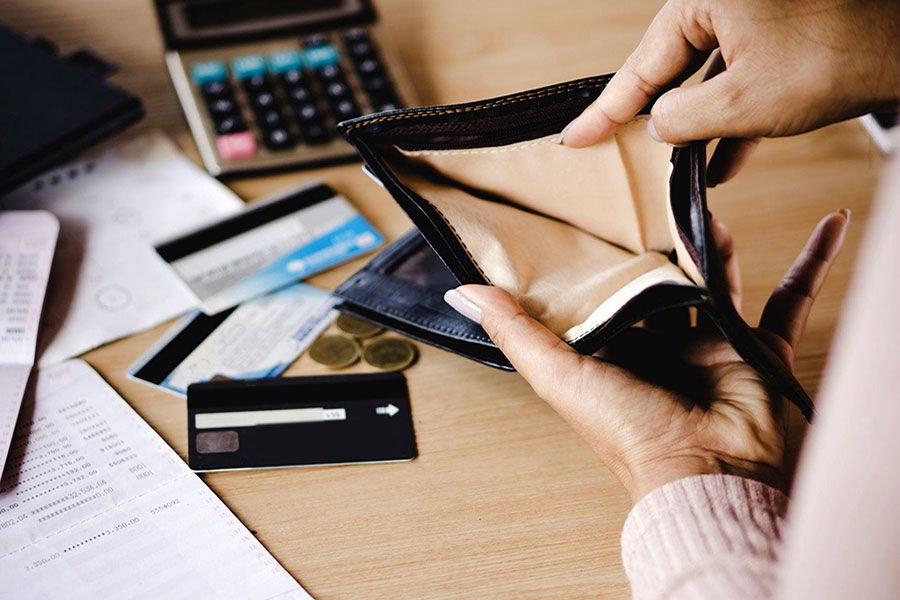APR, or annual percentage rate, plays a big role in how much you pay when borrowing money. Whether it’s a credit card, mortgage, or auto loan, the APR affects your monthly payments and the total cost of the loan. But many people confuse APR with interest rates or overlook fees that can increase borrowing costs.

If you’re comparing loans, credit cards, or financing offers, knowing how APR works can help you avoid expensive mistakes. This guide explains what APR is, how it’s calculated, and how it affects your finances.
What does APR mean?
When you borrow money—whether through a loan or a credit card—the APR tells you the true yearly cost. It includes not just the interest rate but also lender fees and other charges. That’s why the APR often ends up being higher than the interest rate alone.
Many people focus only on interest rates, but overlooking the APR can lead to paying more than expected. Even credit cards with 0% introductory offers can rack up interest and fees if the balance isn’t paid off in time. Always compare APRs when evaluating credit options.
How APR Works
Lenders and credit card companies apply APR to any balance you carry beyond a billing cycle. APR includes the interest rate plus any required fees, giving you the full picture of how much borrowing will cost over a year.
The APR is often higher than the advertised interest rate because it reflects added charges. Lenders must disclose the APR, making it easier to compare credit cards, loans, or financing offers side by side.
Since each lender sets its own rates, fees, and penalties, the APR helps simplify comparisons so you can spot the most affordable option.
APR Compared to Other Rates
APR is just one of several rates you might see on credit cards or loans. Another common figure is the daily periodic rate, which breaks the APR down into a daily rate by dividing it by 365. Some lenders also use a monthly periodic rate, which divides the APR by 12.
These smaller rates help lenders calculate how much interest to add to your balance daily or monthly, but the APR gives you the full annual cost.
How does APR work on credit cards?
Here is an example in practical terms.
A credit card (or loan) has an APR of 15%. The daily periodic interest rate would be 0.041%, while the monthly periodic interest rate would be 1.25%. Credit card issuers need to know these numbers because they add interest to your balance on either a daily or monthly basis rather than annually.
Another term is the annual percentage yield or APY. It takes into account the interest that is compounded each month, while the APR does not. For example, say you borrowed $1,000 with an APR of 12%. The monthly periodic rate is 1%, making the interest for that period $10.
If nothing is paid on the principal, the balance goes up to $1,010. The following month, the interest charged will be slightly higher because it is compounded on the $1,010 rather than the original $1,000.
Most credit card issuers offer a grace period. The grace period is the time between the end of a billing cycle and when your bill is due. You are generally not charged interest on your balance during this period as long as you pay it off by the due date.
How is APR calculated?
The APR depends on two factors. First, the U.S. prime rate is the base at which all other interest rates start. This is the interest rate you hear financial experts talk about when determining if the base rate will go up or down.
It impacts all other interest rates. Second, the creditor or financial institution adds a margin rate, which is the amount above the base rate.
This rate may stay the same regardless of the base rate. For instance, the base interest rate may be 4.9%, and the creditor charges a 10% margin for all financing. The interest rate for the customer would be 14.9%.
How to Calculate Credit Card Interest
To calculate credit card interest, you must first determine your outstanding balance. This is the amount of money you currently owe on your credit card.
Next, identify your APR. This is the interest rate charged on your credit card balance per year. Divide this APR by 365 to calculate the daily periodic rate (DPR), and then multiply this DPR by your balance to determine your daily interest charge.
For example, if your APR is 18% and your outstanding balance is $1,000, then your daily interest charge would be $0.49 (0.0493% x $1,000). Multiply this daily interest charge by the number of days in your billing cycle to arrive at your total interest charge for the month.
Floating or Fixed APRs
Many loans have a fixed APR, which means your interest doesn’t change throughout the life of the loan. You will most often see this in a fixed rate home loan, car loans, or personal loans. With some home loans, you may have an adjustable rate, which means it changes once and then sets at a fixed rate for the duration.
Credit cards often use a variable APR (or floating APR), which is set for a specific period of time. It changes as the U.S. prime rate changes, meaning you may pay a different interest rate from when you first signed up for the credit card.
You may also discover that a creditor provides different APRs for various charges. This is most often seen in credit cards. For example, you pay one APR when you use the credit card for purchases and another one (usually higher) if you take out a cash advance. Typically, the cash advance APR is higher than the purchase APR.
What Determines Your APR
Several factors determine your credit card’s APR, which is why it is such a complicated concept. First, the U.S. prime rate directly impacts the APR you’re being charged, as does the creditor’s margin rate. Then, on top of those set influences, other variables affect the specific APR you’re offered for your credit card or loan.
Most importantly, your credit history and credit scores impact whether you have a low or high APR. Someone with a lower credit score pays a higher APR than someone with excellent credit.
To make this fair, creditors must follow specific rules they set in place for all customers. While they can charge customers different interest rates, it must be within its guidelines.
For example, a credit card issuer may charge a 10% APR for customers with a credit score over 700 and a 15% APR for customers with a credit score below 700. However, under this set of rules, they could not charge a 10% APR for one customer with a 705 score and 15% APR for a second customer with a score of 703.
Special APRs
Credit card issuers can also charge special APRs for certain situations. You’ll often see this in practice when credit cards offer a 0% APR for the first 90 days for new customers.
- Introductory APR: The introductory APR is in effect only for a limited time, and it may come with restrictions, such as not being available for balance transfers.
- Penalty APR: Credit card companies generally have a penalty APR in place for people who make late payments or violate their agreement in some way. This APR goes into effect for all future purchases, but it may be lowered if a customer proves to be responsible with the rest of their monthly payments.
- Balance transfer APR: Some credit cards have a special balance transfer APR. You may see ads promoting a zero percent balance transfer rate. This is typically in effect only for amounts transferred from another credit card and doesn’t include new purchases or cash advances.
It is usually only in place for a limited time before a higher APR goes into effect. Pay attention to these details. Otherwise, you could end up paying more for your balance transfers or new purchases.
How to Compare APRs
Comparing the APR to the competition is the only way to know the true cost of a product you are financing. Don’t forget to factor in special charges such as annual fees, as these will influence your APR, though late payments and other fees can’t be calculated in advance.
If you are a loyal customer who has always paid on time, then you may be able to negotiate a lower APR. You can request a review of your account to see if you qualify for a more favorable rate, although banks are not obligated to grant your request. However, if you have a competitive offer from another credit card company, then it is always worth trying.
Negotiating a Lower APR
If your APR feels too high, you may be able to negotiate a better rate. Some credit card companies will lower your APR if you have a strong payment history or receive a competing offer from another lender. However, in some cases, the lender might lower the rate but also reduce your credit limit or close the account to limit risk.
For mortgages, you can pay points upfront to secure a lower APR. This adds to your closing costs but can save money over the life of a long-term loan.
Final Thoughts
APR plays a major role in how much borrowing will cost you—both month to month and over the long run. Whether you’re applying for a credit card, loan, or mortgage, pay close attention to the APR, not just the interest rate.
Compare offers side by side, watch for hidden fees, and consider asking for a better rate if your credit profile has improved. Being informed and proactive can keep more money in your pocket and help you make smarter financial decisions.




